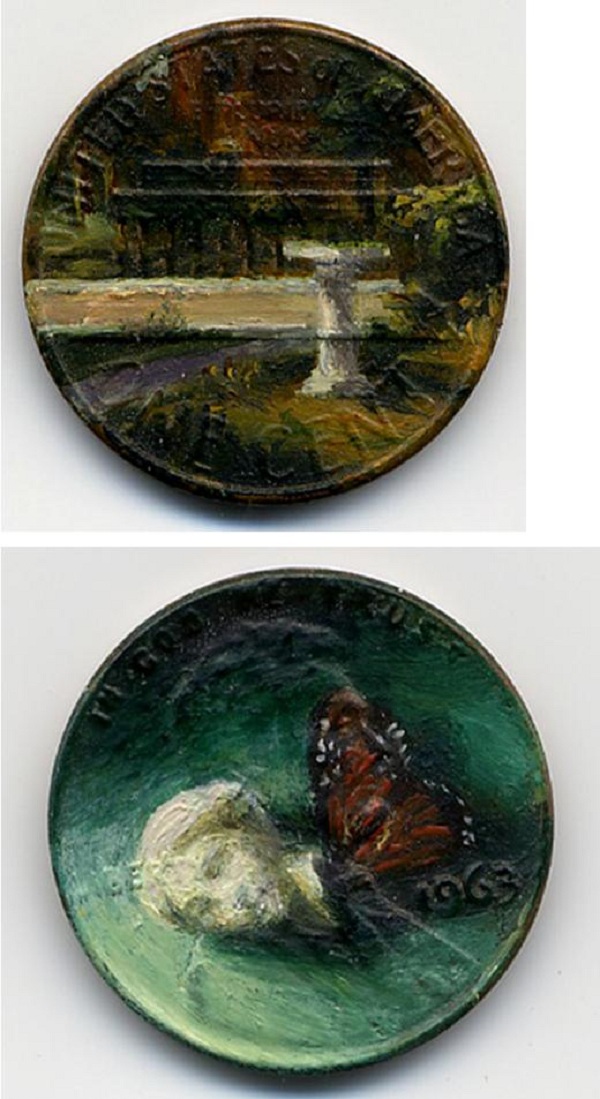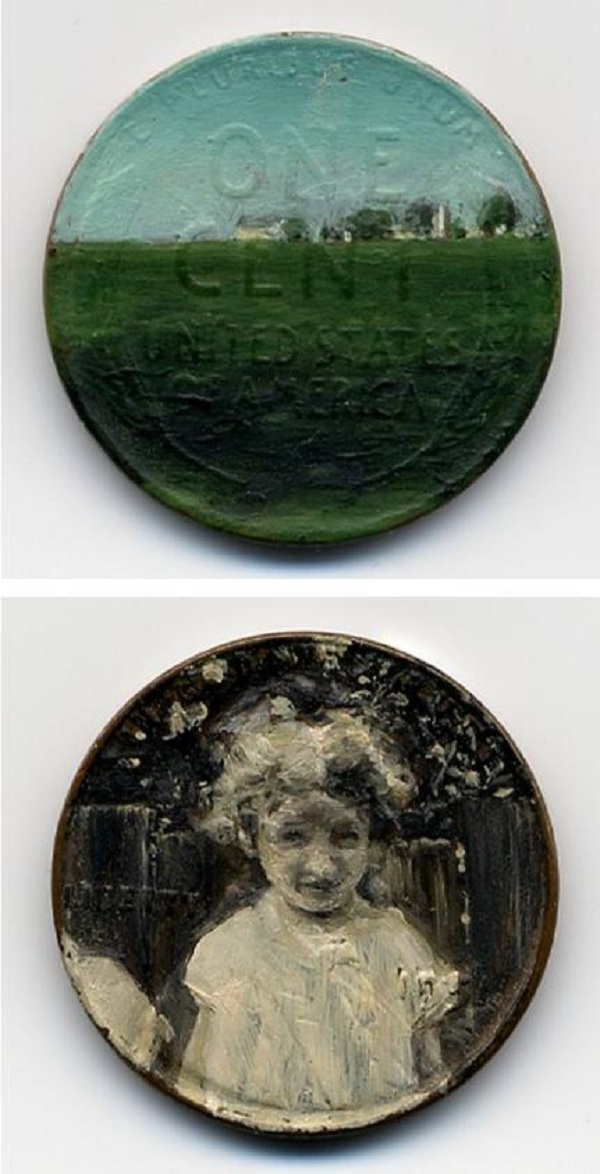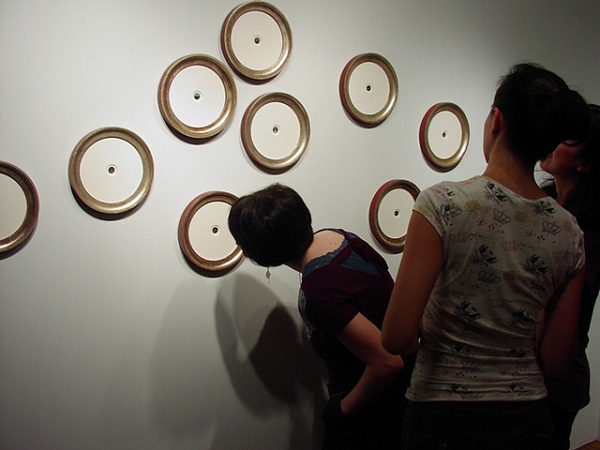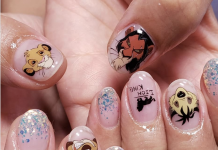Artists who create masterpieces in miniature such as these tiny paintings should not be appreciated only for their creativity, but also for their effort.
Jacqueline Lou Skaggs, the painter who did the following tiny oil paintings, graduated from the John Herron School of Art in Indianapolis, Indiana, and holds a Masters degree from the Maryland Institute College of Art. She has been exhibiting her works since 1989, but the following masterpieces are certainly the ones that brought her the most popularity.

According to the painter, the wee paintings represent a tribute to the concepts that hold together our family, religious, social and political worlds. Since the real faces of the coins took a back seat, thus allowing the works of art to be first and foremost, Jacqueline Lou Skaggs’ masterpieces stand to show that there are far more important things in life than money.

Here is how Jacqueline Lou Skaggs described each of these tiny masterpieces: “Abe’s Millennium is a portrait from a found thrift-store photograph (regrettably sold at a yard sale). The title comes from my knowing that we still have a long way to go. “Kisses and Ghosts” is from a portrait of my mother as a child standing next to a bird bath with her brother. I once read a report in which children were asked what they feared most. The two most popular answers were “kisses” and “ghosts”. “Four Witches Stand” is a line in the Pledge of Allegiance. “The Unburning Bush” is a bush that never burned. “The Field of Sleeping Peasants” is waiting for Picasso. “Venus Dreams” is a dreaming Venus (give me wings for arms any day). “The Baptistery” honors the rain Gods for suburban birds. “Through carelessness…” is a random line chosen with my eyes closed from the Chinese book of chance, I-Ching. “A Pile of Burnt Wood” is just that, in the approaching evening light. “A Still Life” is too still… and so on.”

At first, Jacqueline Lou Skaggs thought about discarding the painted pennies. This would have meant to return them from where they were taken, more or less, or even to spend them, mixed with other coins, at supermarkets and such. After giving it some thought, though, she decided to keep them as the forms of art that they are, instead of discarded copper. As you can see in the following image, she did well to exhibit her masterpieces, as the public seems to appreciate them. The fact that some of her tiny paintings were bought by people who saw them must have contributed to her change of feelings.

If you liked this post, please check the painting typewriter and the 18 greatest Mona Lisa painting remakes.










